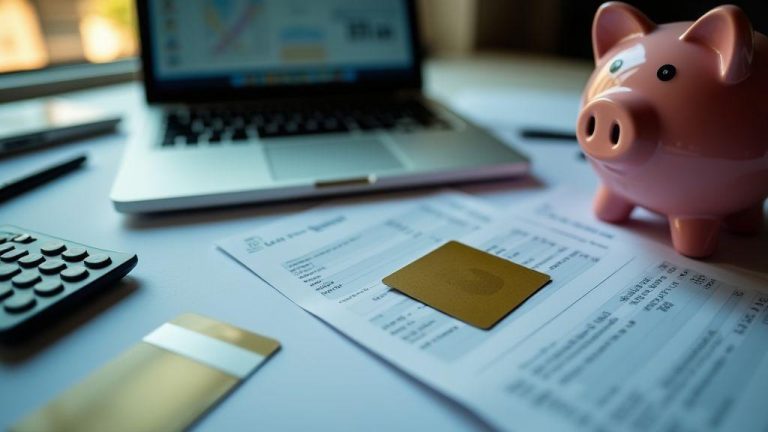You’ll get a clear list of documents to gather and how to check your eligibility. Learn how to show proof of income and meet credit score needs. Grab quick ID, a recent bank statement, and a pay stub for the short checklist. Understand interest rates, fees, and repayment terms so you know what you’ll pay each month and how long you’ll be in debt. Use simple steps to estimate total cost and monthly payment. Compare lenders, use pre-application tips to boost approval odds, and follow the final 9 Checklist before applying for an emergency loan so you’re ready to apply.
Check the documents required for an emergency loan and your eligibility
Lenders look for identity, income, and a clear reason for the emergency loan. Start by checking your ID, proof of address, recent bank activity, and income paperwork. Age and residency rules are usually simple: you must be an adult and a resident or have legal permission to borrow where you live. Think of this step like packing for a trip — if you forget your passport, the trip stalls.
Next, look at your credit picture and debt load. Some lenders need a decent credit score; others lend to people with lower scores but charge more. Also check your debt-to-income: if monthly debts swallow most of your paycheck, you may need a co-signer or a secured option. Imagine two doors: one unlocked and cheap, the other locked tight — your credit and debts decide which door you can open.
Finally, prepare proof for the emergency itself if asked. Medical bills, repair estimates, or a termination letter can speed approval. Write down the facts and keep receipts. Before you upload sensitive documents, review the site’s privacy policy so you know how personal information is handled. The 9 Checklist before applying for an emergency loan will help you gather the right papers fast and calm your nerves.
List the common documents you should gather
Nearly every lender asks for a government ID, Social Security number or tax ID, and proof of address — driver’s license or passport and a recent utility bill or lease with your name and address. They’ll also ask for bank statements from the last one to three months. These show where your money comes from and where it goes.
You should also pull together proof of income. Pay stubs, W-2s, or recent tax returns work for traditional jobs. If you’re self-employed, bring profit-and-loss statements or 1099s. And don’t forget any paperwork tied to the emergency: medical bills, repair quotes, or an eviction notice. Having these ready feels like carrying an umbrella when the sky looks gray — you’ll avoid getting soaked.
How to show proof of income and meet credit score requirements
To prove income, most lenders accept the last two to four pay stubs and recent bank deposits. If you’re paid irregularly, show several months of bank statements and invoices that match deposits. Self-employed folks can use tax returns and a simple profit-and-loss summary. If a lender asks, a short letter from your employer with contact info helps. Keep documents clear and labeled so the reviewer can scan them in seconds.
Credit score needs vary. Some online lenders accept lower scores but charge higher rates. If your score is low, consider a secured loan, a cosigner, or smaller amounts that are easier to repay. Quick fixes include pulling your credit report, fixing any errors, and paying down small balances. Think of your credit like a garden: a little pruning now gives you better growth soon.
Quick ID, bank statement, and pay stub checklist
- Photo ID current and matching the name on loan forms
- Bank statements showing consistent deposits that match paystubs
- Paystubs with year-to-date earnings, employer name, and net pay
- Scan or take clear photos of each page, label them with dates, and keep originals handy
Understand emergency loan interest rates, fees, and repayment terms
When you need cash fast, the words “interest,” “fees,” and “repayment” matter more than the shiny ad. Interest is the price you pay for borrowing. Fees are one-time or ongoing costs on top of interest. Repayment terms tell you how long you must pay and how much each payment will be. Learn these parts so you don’t get surprised when the bill hits.
Interest can be shown as a rate (like APR) or calculated daily. Fees can be obvious, like an origination fee, or hidden, like a processing charge. Together they decide the real cost of the loan. Two loans with the same rate can still cost very different amounts once fees and repayment timing are added.
You should compare the total cost, not just the headline rate. Ask for the APR and the full payment schedule. If a lender won’t show you the math, step back. Short loans can have high APRs but smaller total dollars; long loans can feel cheaper monthly while costing more overall.
How interest rates and fees affect what you pay
Interest and fees change your monthly payment and the total you repay. For example, a $1,000 loan at 20% APR over a year costs more than $1,000 plus 20%—fees can push that much higher. If you add a $100 origination fee, your real cost rises even though the advertised rate stays the same. That’s why APR and added fees matter.
Also watch how interest is calculated. Some loans charge interest daily or compound it, which raises the cost faster. Late fees, prepayment penalties, and rollovers can multiply what you planned to pay. Picture a small crack in a dam: a missed payment often lets a lot more water through.
Read repayment terms so you know monthly cost and loan length
Repayment terms spell out how often you’ll pay, when payments are due, and how long you’re on the hook. Ask for the amortization schedule so you can see how much of each payment is principal versus interest. That helps you judge whether small monthly payments are really helpful or just prolonging the cost.
Check for special conditions: balloon payments, automatic renewals, and grace periods. A low monthly payment with a big balloon at the end can leave you scrambling. If the loan allows early repayment without penalty, you can save on interest; if it has a prepayment fee, that option might not help.
Simple steps to estimate total cost and monthly payment
- Add one-time fees to the loan amount to get the financed total
- Use the APR and loan term (or an online calculator) to get monthly payments
- Multiply monthly payment by number of months to see total cost
- Add likely late fees or optional insurance for a realistic estimate
Compare emergency loan options and use pre-application tips to prepare
Look at more than the headline rate. Start by checking APR, fees, loan term, and the total amount you’ll pay back. Banks, credit unions, online lenders, and payday lenders move at different speeds and charge differently. Think about what matters most: a low monthly payment, fast cash, or a simple process — that choice will steer you to the right lender.
Run the numbers like you’re balancing a checkbook. Use a quick calculator to see monthly payments and total cost for each offer. Also factor in how quickly you need money; one lender might get cash to you the same day, while another takes a week. Time is money in an emergency.
Talk to someone who’s been there. Read a few reviews and ask friends who’ve borrowed recently. A lender might promise fast approval, but customer service and clear terms matter more when things are tight. If a loan sounds too good to be true, it probably is — trust your gut and double-check the fine print. If you need help or have questions about any of these steps, our team is available on the get in touch page.
Steps to compare options and lender offers
- Define how much you need and how long you’ll take to repay.
- Pick the loan type that fits: small personal loan, credit card cash advance, or a short-term emergency loan.
- Gather APR quotes, origination fees, late fees, and payment schedules from multiple lenders.
- Calculate monthly payment and total repayment for each option.
- Read reviews and check the lender’s licensing and complaint history.
- Prequalify without a hard credit pull if possible to see likely rates.
Pre-application tips to improve approval chances and confirm eligibility
Polish your credit profile if you have a few days. Pay down small balances, correct errors on your credit report, and avoid opening new accounts. Even small moves can nudge your score into a better rate band. If time is tight, focus on what you can change quickly, like clearing overdrafts or updating contact info.
Gather the documents lenders ask for and check eligibility rules ahead of time. Typical requirements include ID, proof of income, recent bank statements, and proof of residence. If you don’t meet one rule, a co-signer or a secured option might be available. Call the lender to confirm what they need so you’re not caught off guard at application time.
Final emergency loan checklist to prepare for application
Use this 9 Checklist before applying for an emergency loan:
1) Exact amount needed
2) Target repayment term
3) Recent credit score
4) ID and proof of address
5) Pay stubs or income proof
6) Recent bank statements
7) List of fees and APR from multiple lenders
8) Plan for monthly repayment
9) Backup plan if income changes
Have these ready so you can apply fast and avoid surprises.
Conclusion
You’ve got a clear game plan. Gather the key documents — ID, recent bank statements, and pay stubs — and verify your eligibility before you click apply. Know the real cost: check interest rates, fees, APR, and the full repayment terms so the monthly hit isn’t a surprise. Compare offers side-by-side, use simple math to estimate total cost and monthly payment, and lean on pre-application tips to boost approval odds.
Frequently asked questions
Q: What is the 9 Checklist before applying for an emergency loan?
A: It’s a short step list you follow to check costs, gather docs, and weigh risks so you can decide fast.
Q: What documents should you gather first?
A: Bring your ID, pay slips, and bank statements. Grab any bills and proof of address. Keep photos or scans ready.
Q: How do you check total cost fast?
A: Add interest, fees, and term. Ask for the total repayment amount and compare two or three offers.
Q: When should you skip applying?
A: If you cannot repay soon, if fees are hidden or huge, or if the lender asks for money up front.
Q: How long will approval take?
A: It can be minutes to days. Online apps are quickest; banks may take longer.
For privacy details about document handling and data security, consult our privacy policy.



